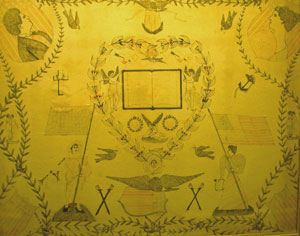|
|||
|
Sap is Running, Time for Maple Sugar Molds For those in cold and snowy areas of North America, by mid-February the beauty of winter has become old and the spring thaw can’t come soon enough. For maple syrup production, warms days and below freezing nights make the ideal time for sap to flow. In Vermont and Northern NY, maple trees are typically tapped around March 1 in anticipation of the spring thaw. Maple sugaring was introduced to the early pioneers by the Native Americans who had been producing maple sugar for many years before the Pilgrims landed in 1620. The Native Americans would move their families into “sugar camps” – a spot in the forest where maple trees were plentiful – for the 3-4 weeks that the sap would flow. According to journals of early New England explorers, there were three types of maple sugar made by the Northeastern American Indians: "Grain Sugar" a coarse granulated sugar similar to that we know as "brown sugar"; "Cake Sugar," sugar poured into wooden molds to become hard cakes or blocks; and "Wax Sugar," which was made by boiling syrup extra thick and pouring it over snow.1
For New Englanders, the locally made sugar was also important as it provided a source of less-expensive sugar not produced by slaves in the West Indies. The basic premise of maple sugaring didn’t change, but it did go through updates in the 100 years leading up to the Civil War. Metal buckets replaced wooden, metal tanks for sap storage replaced hallowed logs and wooden kegs and large flat pans replace the kettles. Of course, today it’s tubes, vacuums and fancy evaporation equipment.
Original wooden maple sugar molds are collectible. You can find them with interesting shapes such as hearts, flowers, maple leaves, and geometric shapes. You can also find animals such as squirrels and beavers. In addition, there are molds that were made from multiple pieces of wood that formed a larger three dimensional mold such as a log cabin. Smaller tin molds were introduced in the last 1800s and were used primarily for maple sugar candy. References:
|
||||
|
Love Tokens Valentine’s Day is just around the corner. I have sweet memories of schoolgirl days and decorating a big box for my class to deposit our valentines in. Back then valentines were either cute store bought cartoonish ones or ones made from red construction paper and heart shaped paper doilies. The tradition of giving love tokens for Valentine’s Day became popular in the middle of the 1600's. Since then many generations have given expressions of their affection. Sailors returned from sea with beautifully crafted valentines made of tiny shells, baleen boxes, or carved whale bone.
We also find lots of utilitarian objects with hearts carved in them. These hand crafted gems were perhaps given as a useful gift from an admirer. About Lyn Andeen
|
||||
|
Loving the Pins We have updated the Shop on Dig Antiques to make it easier to pin photos on to your board on Pinterest. Now each photo has it's very own pin. Just click the pin under the photo and decide which of your boards you want to pin it on. you can add your own comment too! Let us know what you think of this new feature. And don't forget to follow the Dig Antiques boards too. Do you have your own website? Are you looking to drive more traffic to your site? consider adversiting on Dig Antiques! We offer small banner ads, featured ads and we can even prioritize your search results. Learn more about supporting Dig Antiques here. Sincerely, |
|
Search Showcase Have you been digging for antiques recently? |
|
January 2013 Top Searches Below is a summary of the twenty most popular search phrases last month.
1. cupboard |
|
Sponsors |
|
Thank you to the following current advertisers for their support of Dig Antiques:
Baker & Co. Antiques If you are interested in supporting Dig Antiques through advertising, please click here. |
|
Contact Us |
|
For general information:
Website: www.digantiques.com |
|
© 2013 Dig Antiques. All rights reserved. |



